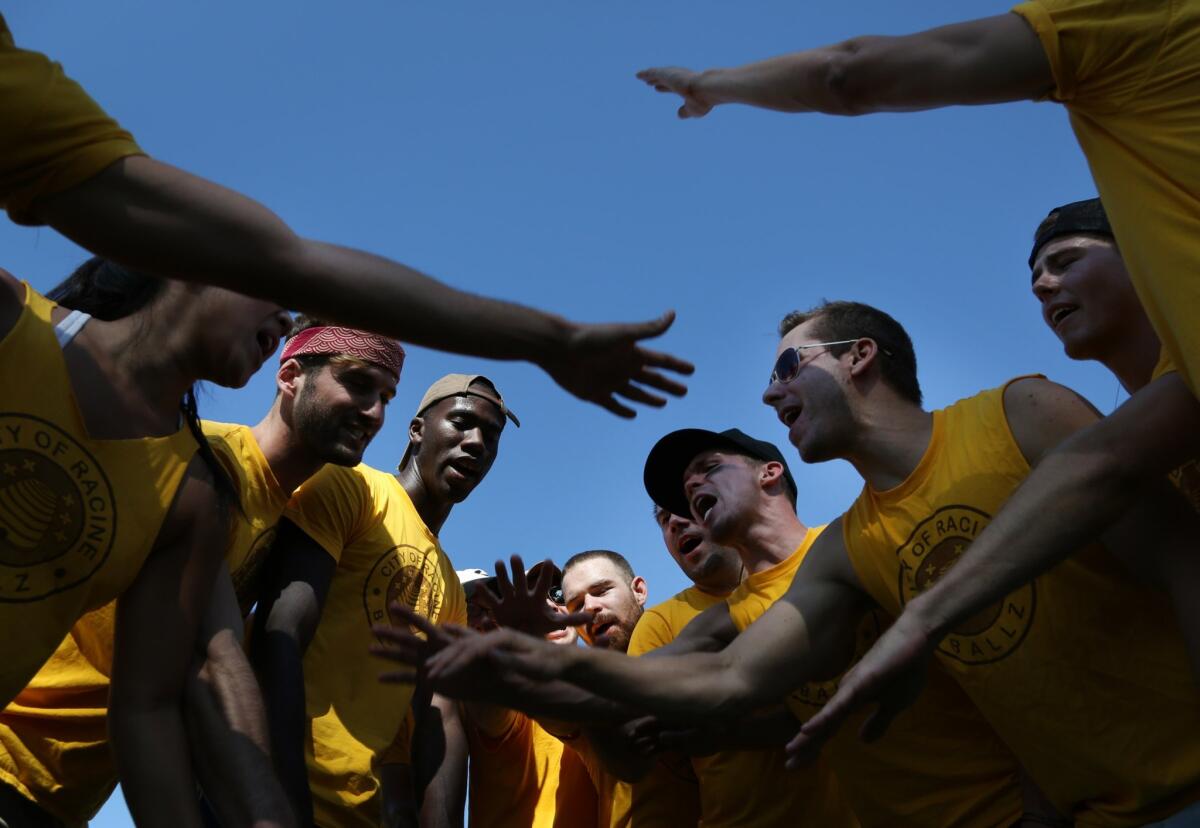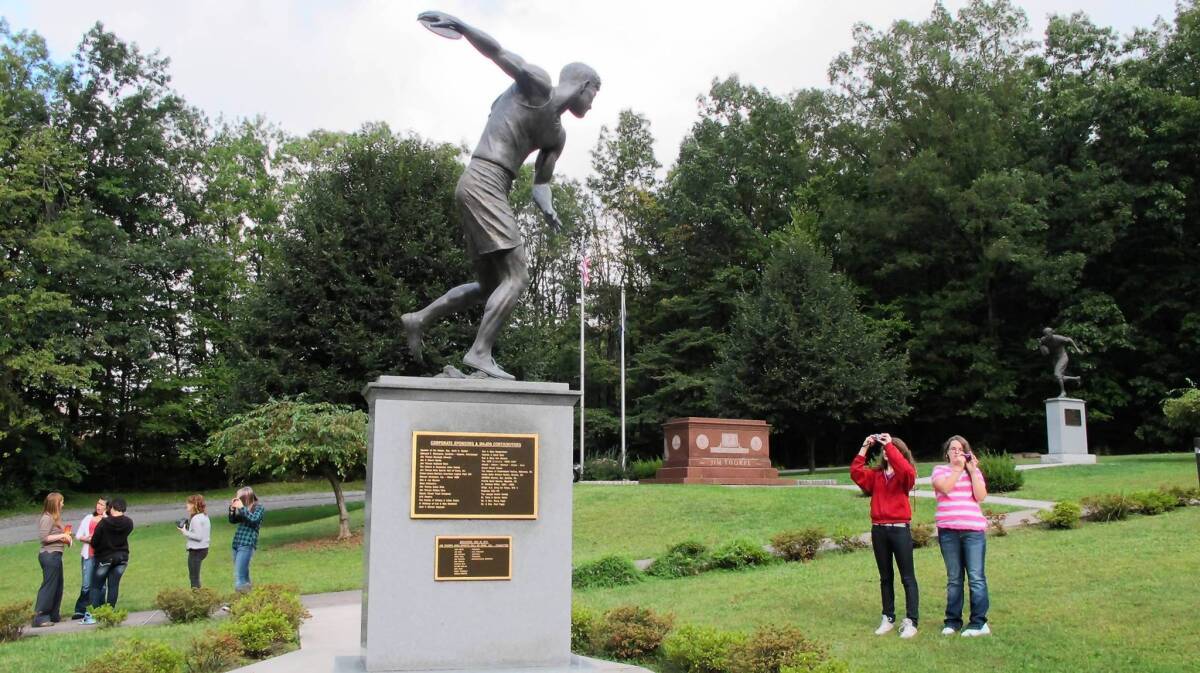Odd monuments give quirky history lesson
Sonny Bono Park, the ‘ugly’ Temperance Fountain and the Maine Lobsterman in Washington, D.C., all honor topics that were important to particular groups at particular times.
- Share via
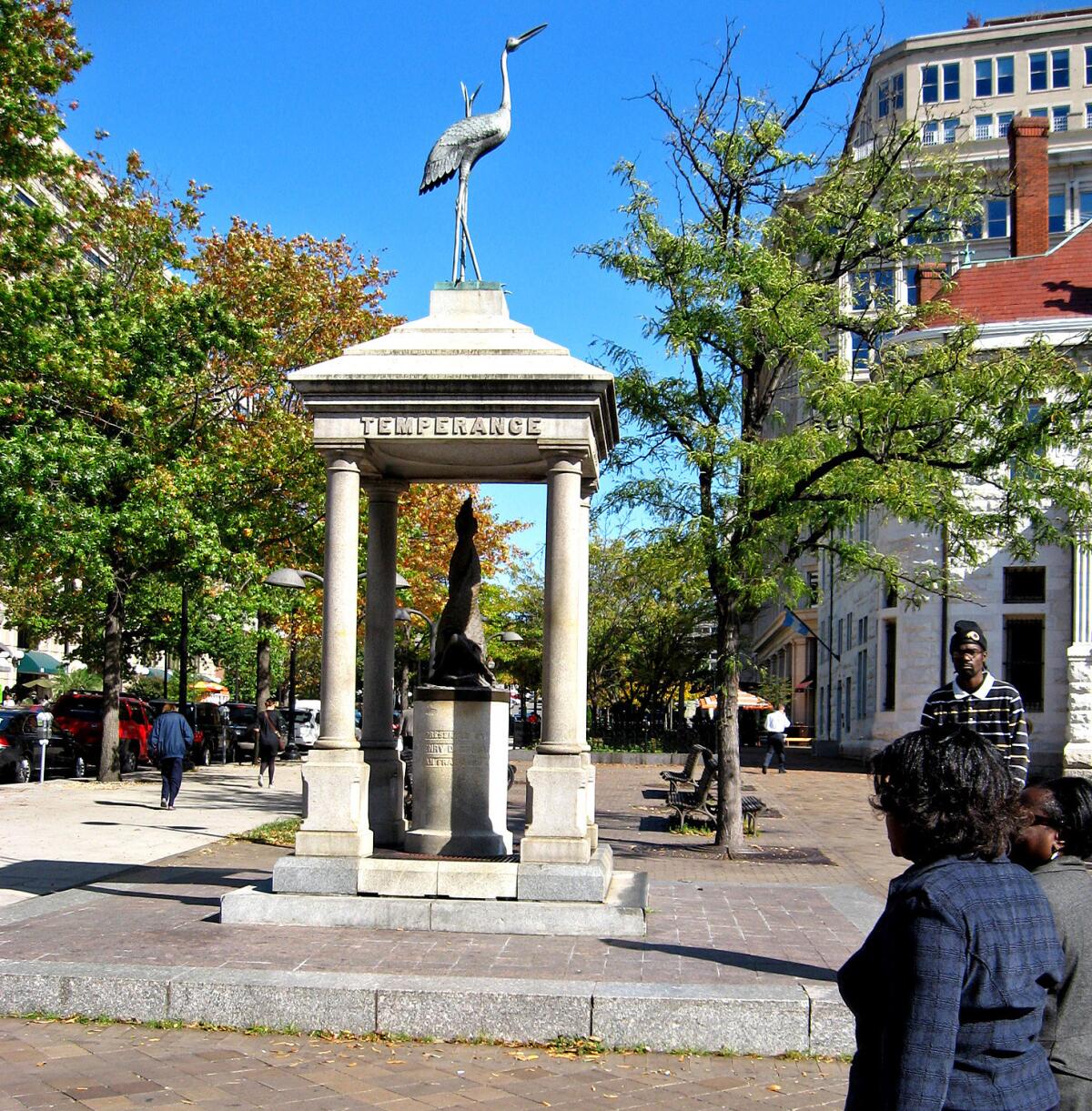
Sure, the Lincoln Memorial and Washington Monument are must stops for visitors touring the nation's capital.
But what about Sonny Bono Park?
Or the Maine Lobsterman Memorial?
Or the Cuban Friendship Urn?
They're all here, as are scores of bronzes, shrines, pillars, plaques and monoliths dedicated to the unexpected and the obscure.
The father of homeopathy? He's got a monument. So does James Buchanan, regarded as among the nation's worst presidents.
And don't miss the Bernard Baruch Bench of Inspiration.
"I just came here because no one was sitting here," said Nikolai Paneck, an 18-year-old tourist. He was unaware that he was occupying a bench dedicated in 1960 to honor the financier and presidential advisor who liked to sit at this spot in Lafayette Park opposite the White House.
These monuments are like a lot of the politicians in this town — in search of recognition. They also illustrate how some topics (like temperance) and people (like inventor John Ericsson) hold and then lose the spotlight. And this being Washington, the success of some commemorative projects shows the ever-present power of influence.
Senators from Maine helped secure a site on the city's waterfront for the lobsterman tribute. A gift from a chapter of Camp Fire Girls, the monument features a 7-foot-tall bronze of a brawny mariner, complete with lobster.
The Cuban Friendship Urn, fashioned from fragments of a hurricane-damaged memorial in Havana to the battleship Maine, was donated to the United States when the countries were still on friendly terms.
Located just southwest of the Jefferson Memorial, the white marble urn depicting the sinking of the Maine and an eagle receives few visitors. The same goes for the salute to inventor Ericsson, a lonely outpost in the shadow of the Lincoln Memorial.
The dedication in 1926 of the imposing granite statue of the Swedish-born inventor seated in deep thought drew President Calvin Coolidge and a crowd of 5,000. There was even a 21-gun salute from a gunboat in the Potomac River, a fitting tribute to the designer of the screw propeller and the Civil War ironclad warship Monitor.
Even if some monuments draw scant attention, historians say they are useful and important.
"It's a little bit like an outdoor history lesson," said Kirk Savage, a University of Pittsburgh professor of history of art and architecture who wrote a book about the monuments in the nation's capital. "They do have redeeming value in what they tell us about our past.
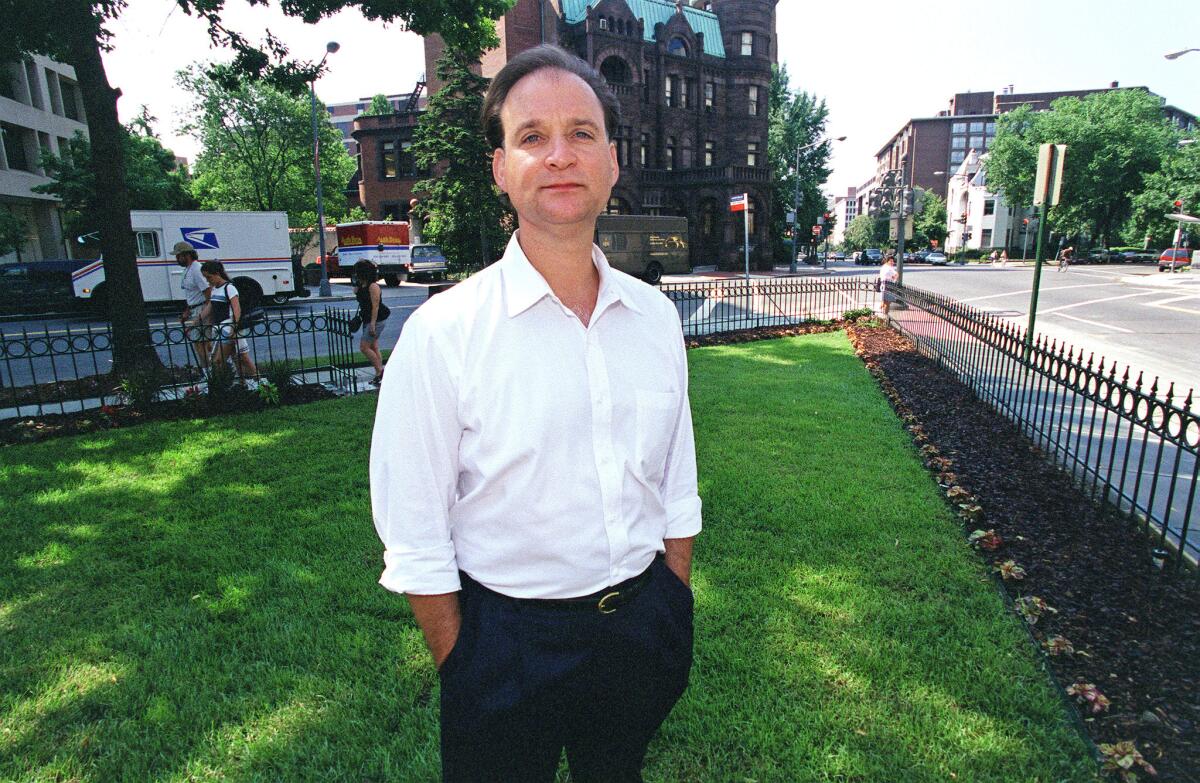
The Sonny Bono Park was the idea of developer Geary Simon, a friend of Bono's who spent $55,000 to spruce up a weed-covered patch of city land under D.C.'s Adopt-a-Park program. Simon says he comes to the park "two or three times a month to sit with my buddy." (Scott J. Ferrell / Congressional Quarterly) More photos
"These are all projects that were important to particular groups of people at particular times," he added.
Consider the Temperance Fountain.
The fountain, one of a number placed in cities in the 1870s and 1880s by San Francisco dentist Henry Cogswell to promote temperance, once dispensed water to discourage drinking of alcohol. California Sen. Sheridan Downey launched an effort in the 1940s to remove the fountain, which features entwined dolphins under a roof topped by a heron. He called it a monstrosity.
But Ulysses S. Grant III, the former president's grandson, who chaired the capital's planning commission then, sought to preserve it.
"Ugly, but interesting," he said at the time.
Despite its prominence, off Pennsylvania Avenue between the Capitol and White House, the fountain is often overlooked.
Garrett Peck, who leads tours of Prohibition-related sites here, said he asked Washingtonians if they had ever looked closely at the fountain.
"Very few people raise their hands," said Peck, author of a book about Prohibition in Washington. "Then I ask, 'How many of you have walked past this? And every hand goes up.'"
Anyone can propose a public tribute, but it takes an act of Congress to build one on the hundreds of federal parcels managed by the National Park Service in the District of Columbia. Some tributes occupy private property or city land.

Though there have been complaints about monument overload on the National Mall, the rest of the district seems fair game, with proposals for new ones popping up left and right. Congress has already approved new memorials in areas other than the mall to President Dwight D. Eisenhower, disabled U.S. veterans, victims of the Ukrainian famine and Francis Marion, the Revolutionary War hero known as the Swamp Fox.
Lawmakers are considering a measure that could make it easier to raise funds to build yet more monuments. The measure would permit what its proponents describe as tasteful recognition of donors, perhaps with a nearby plaque listing names, but no golden arches or swoosh logos. And definitely no "John Adams Memorial, sponsored by Toyota."
Some of these obscure monuments are outright gifts from families or groups. That's how Buchanan, Abraham Lincoln's lackluster predecessor, got a statue here. His niece willed $100,000 for it, and Congress, after some debate, agreed to accept it in 1918.
I just came here because no one was sitting here."— Tourist on the Bernard Baruch Bench of Inspiration
The shrine to the father of homeopathy — Samuel C.F. Hahnemann — was a gift, naturally, from the American Institute of Homeopathy.
Erected in 1900, the elaborate monument off one of the city's busy traffic circles several blocks north of the White House features a statue of a contemplative Hahnemann. He is in a scholarly robe seated in front of a curving granite wall that includes bas-relief panels with scenes of him engaged in activities such as conducting an experiment and tending to a sick girl.
"Hundreds, if not thousands, of automobiles pass by that memorial every day and probably have no idea who that is and why he would be worthy of a memorial," said Carolyn Crouch, founder of Washington Walks, a tour business.
But Dr. Sandra M. Chase, a past president of the American Institute of Homeopathy, assured that "within the homeopathic community, worldwide, this memorial remains beloved, vital, and is anything but obscure."
Some monuments can be hard to find — like a marker along the Potomac noting the 1918 launch of the first regularly scheduled air mail service.
There is no mention that the pilot, who was supposed to fly to New York, went the wrong way and landed 24 miles to the south of D.C., snapping the plane's propeller. The mail eventually reached its destination by train.
Sometimes, monuments baffle visitors.
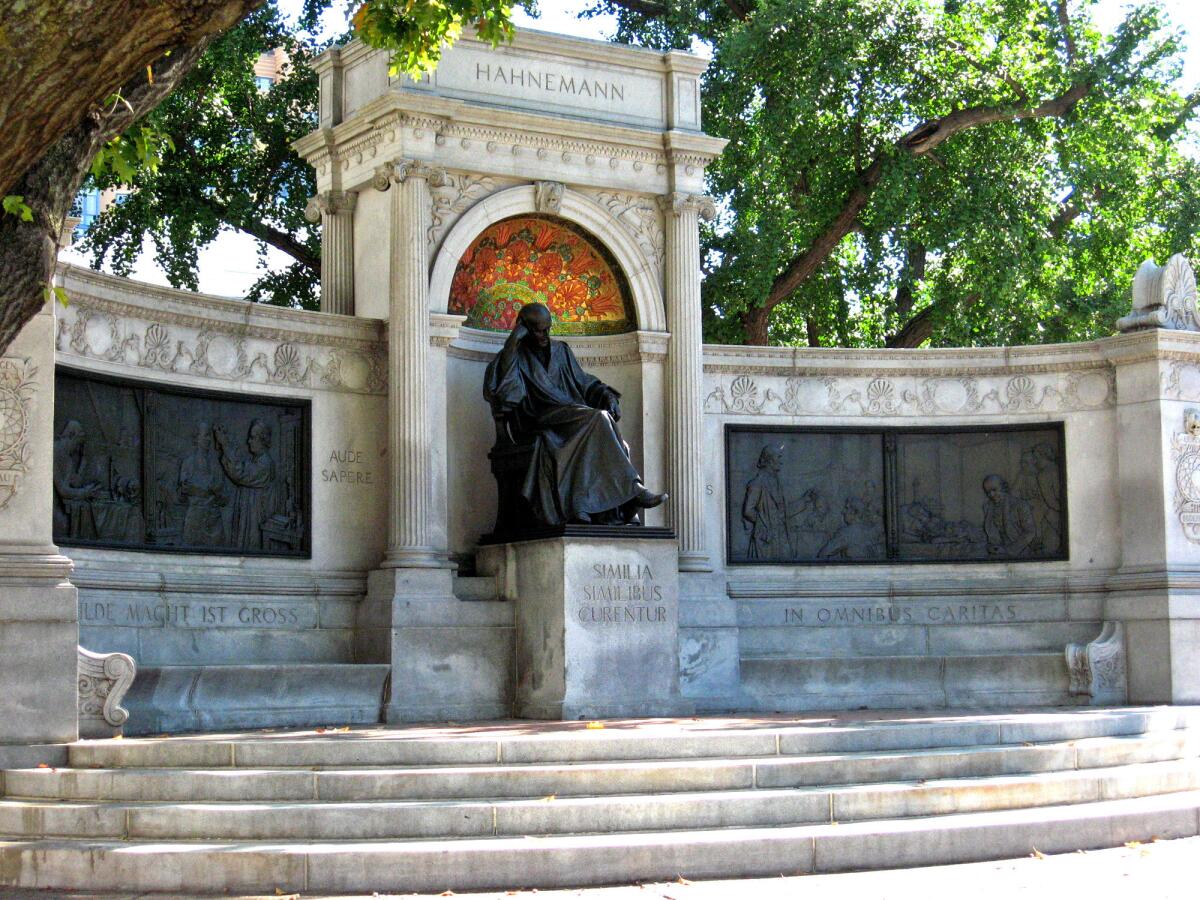
The shrine to Samuel C.F. Hahnemann, the father of homeopathy, was a gift from the American Institute of Homeopathy. It was erected in 1900 and sits off one of Washington's busy traffic circles. (Richard Simon / Los Angeles Times) More photos
Like Sonny Bono Park.
"How in the world did that happen?" asked Eleanor Holmes Norton, the district's delegate to the House.
Frank Cullen, a former aide to the late Palm Springs congressman, conceded, "If you blink, you might miss it."
Indeed you might. The park is a triangular plot of land the size of a small apartment near busy Dupont Circle.
There is no statue of Bono in the 800-square-foot park, but it does have seven stone stools, grass, a Japanese maple and sheet music from the singer-turned-congressman's "The Beat Goes On" buried in an underground vault. There is also what looks like a manhole cover set in the ground with the inscription: "In memory of my friend Sonny Bono. 1935-1998. Entertainer. Entrepreneur. Statesman. Friend."
Crouch, who points out the park while leading walking tours of the Dupont Circle neighborhood, says someone inevitably will ask, "How did that get there?"
The park was the idea of developer Geary Simon, a Bono friend who spent $55,000 to spruce up a weed-covered patch of city land under Washington's Adopt-a-Park program.
People rarely stop to enjoy the park, but now and then a man can be spotted sitting on the bench, recalling the past, which is what the monuments of Washington, the famous and the lesser known, are all about.
Said Simon: "I still manage to get by two or three times a month to sit with my buddy."
Follow Richard Simon (@richardsimon11) on Twitter
Follow @latgreatreads on Twitter
More great reads
Crafting fake eyes is family business, rifts included
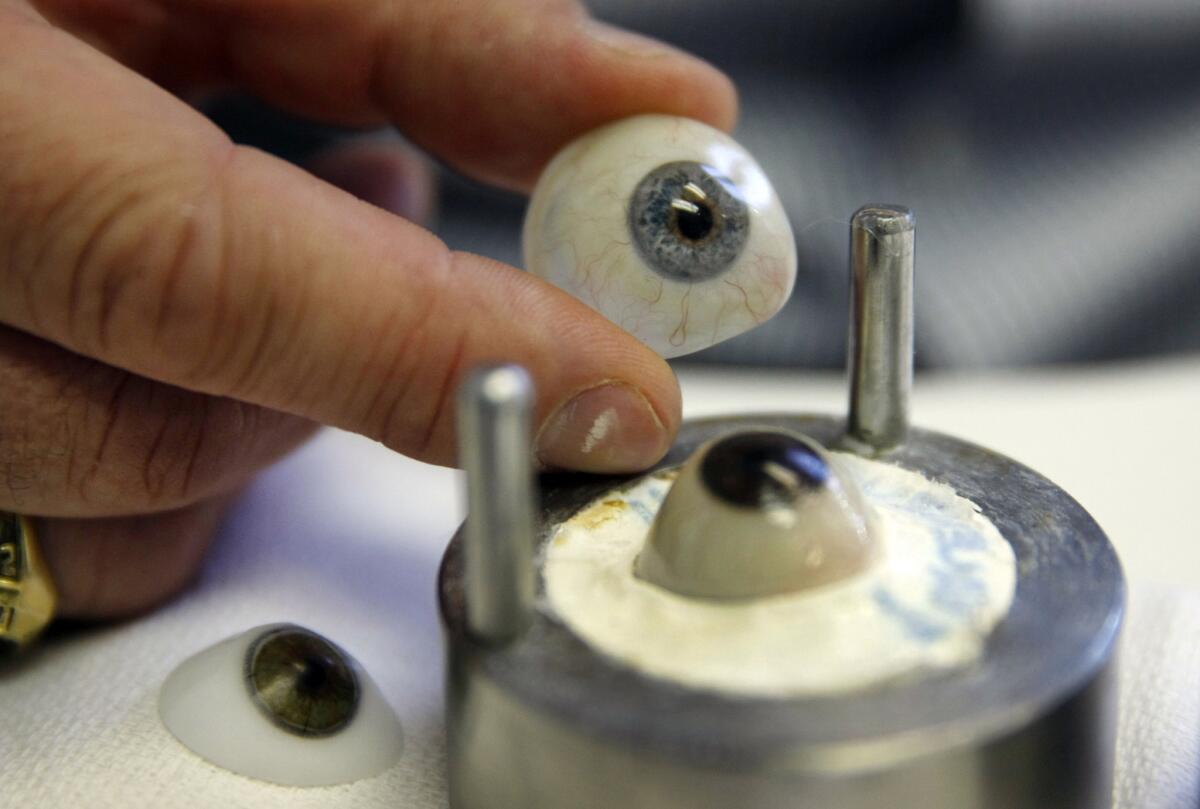
Most ocularists are eye makers. ... I'm interested in giving people a second life."
Sign up for Essential California
The most important California stories and recommendations in your inbox every morning.
You may occasionally receive promotional content from the Los Angeles Times.
